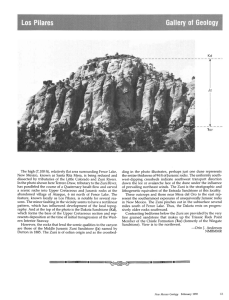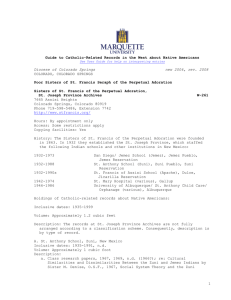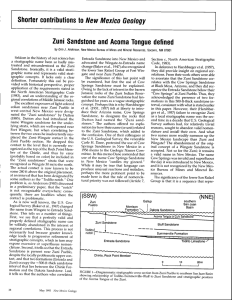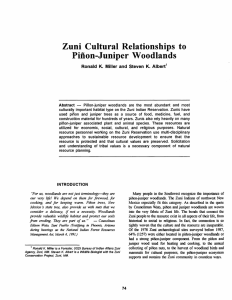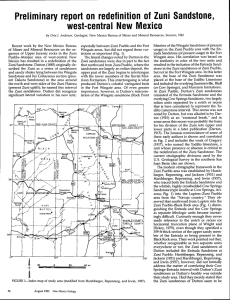Repatriation debates
advertisement
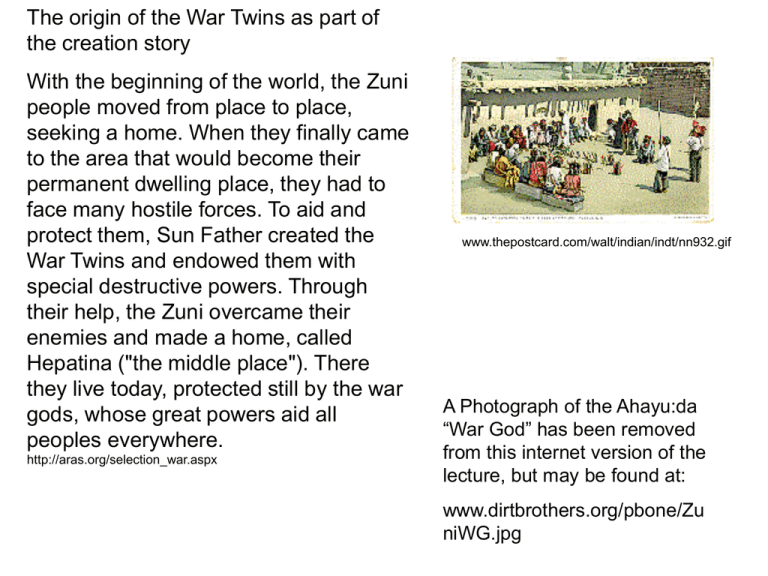
The origin of the War Twins as part of the creation story With the beginning of the world, the Zuni people moved from place to place, seeking a home. When they finally came to the area that would become their permanent dwelling place, they had to face many hostile forces. To aid and protect them, Sun Father created the War Twins and endowed them with special destructive powers. Through their help, the Zuni overcame their enemies and made a home, called Hepatina ("the middle place"). There they live today, protected still by the war gods, whose great powers aid all peoples everywhere. http://aras.org/selection_war.aspx www.thepostcard.com/walt/indian/indt/nn932.gif A Photograph of the Ahayu:da “War God” has been removed from this internet version of the lecture, but may be found at: www.dirtbrothers.org/pbone/Zu niWG.jpg Repatriation Debates 1) Formalistic concerns vs. cultural context 2) The meaning of objects as socially constructed. Do all social constructs have equal validity? (Week 10 Ames and Warren) Curatorial Prerogative (academic freedom) vs. sharing power www.legendsofamerica.com/photosnativeamerica... Formalistic concerns vs. cultural context “’Primitivism’ in 20th Century Art: Affinity of the Tribal and the Modern” Museum of Modern Art , 1984 William Rubin, Museum of Modern Art – “Pairing modern artworks with examples of the African and Oceanic art that had influenced them, the show emphasized formalism at the expense of the larger context both modern and non-western art had developed. The exhibition set off a debate between Thomas McEvilley who had negatively reviewed the show in Artforum” http://www.dictionaryofarthistorians.org/rubinw.htm A Photograph of the Ahayu:da “War God” has been removed from this internet version of the lecture, but is included in the museum catalogue essay described here. Figure (War God) Zuni. Arizona or New Mexico. Painted wood and mixed media, 30 ½” (77.5 cm) high. Museum für Völkerkunde, Berlin. Paul Klee. Mask of Fear. 1932. Oil on burlap, 39 ½” X 221/2” (100.4 X 57.1 cm). The Museum of Modern Art, New York, Nelson A. Rockefeller Fund. Formalistic concerns vs. cultural context Economics 'There is no market for Zuni war gods anymore,'' said Bernard de Grunne, director of the tribal and American art division at Sotheby's New York office. ''They are simply too much trouble to handle.'' Zunis' Effort to Regain Idols May Alter Views of Indian Art By ROBERTO SURO, SPECIAL TO THE NEW YORK TIMES Published: August 13, 1990 http://query.nytimes.com/gst/fullpage.html?res=9C0CE4DD153EF930A2575BC0A966958260&s ec=&spon=&pagewanted=2 http://search.denverlibrary.org Andy Warhol's 15 minutes of repatriation Some will argue that Warhol was one of the biggest burglars in art history for quoting and reworking the images of other artists for his own pictures; but that wasn't theft, it was homage, and the end product always looked like a Warhol, even when it was the :Mona Lisa.” When representatives of Warhol's estate heard about the war god's background (1988) , they immediately volunteered to return it. They said Warhol could not have known of the war god's religious significance or its shady past. Ed Hayes, then the attorney for the estate, recalls the decision-making process as speedy: "When the issue came up, Fred [Hughes, Warhol's business manager, who died in 2001] said, 'We are not in the business of fencing Zuni war gods.' It took about two seconds." http://newsgrist.typepad.com/robertgoldwaterlibrary/2007/03/andy_warhols_15.html Andy Warhol (1928 - 1987) American AMERICAN INDIAN SERIES (RUSSELL MEANS), 1976 Acrylic and silkscreen on canvas Height 84 inches Width 70 inches http://tours.daytonartinstitute.org/accessart/object.cfm?T T=ct&ID=31&COM=aa&F1=warhol&F2=&F3=&F4=&F5= &F6=&F7=&F8= The meaning of objects as socially constructed “If there are no ‘natural meanings’ is it nothing more than a contest of power to determine whose meanings prevail?" (Layton 1993) “Acknowledging that meaning is a cultural construct that can be contested in a political arena is helpful in explaining how nonIndians may understand the cultural and legal aspects of repatriation, but…Zunis seek to recover the Ahayu:da not because they want their meanings to prevail, but because they believe the that the world is endangered is the Ahayu:da are not at their shrines where Zuni priests can attend to them” (Merril, Ladd, Ferguso Example: Prohibition of women handling certain objects when federal law prohibits sexual discrimination in the workplace Varying conceptions of Material Culture – meaning of objects as culturally constructed Ladd “What is real? Whose belief system is to be applied?” Zuni – Ethical Smithsonian - Legal Recovering all stolen Ahayu:da Question of setting precedent will restore harmony to the world Ahayu:da not an object but twin gods, protectors of Zuni people Formation of a tribal museum pre-requisite for return of sacred objects Preservation = deterioration Preservation = stability Communally owned, no one has Public trust concern authority to remove them after they have been “retired” any Each repatriation request Ahayu:da removed has been considered on own merits stolen or illegally removed


